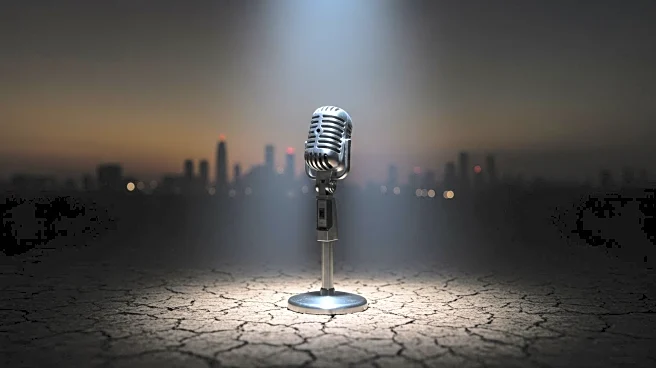What's Happening?
Al Jazeera journalist Anas al-Sharif was killed alongside four colleagues in a targeted Israeli attack on a tent housing journalists in Gaza City. The attack occurred outside the main gate of Gaza City's al-Shifa Hospital, resulting in the deaths of seven people, including other Al Jazeera staff members. Al-Sharif, a well-known correspondent, had been reporting on intense bombardments in Gaza City shortly before his death. Al Jazeera condemned the killings as a premeditated attack on press freedom, calling for international intervention to halt the targeting of journalists.
Why It's Important?
The killing of Anas al-Sharif and his colleagues highlights the ongoing risks faced by journalists in conflict zones, particularly in Gaza. This incident underscores the broader issue of press freedom and the dangers journalists encounter while reporting on conflicts. Al Jazeera's call for international action reflects concerns over the safety of media personnel and the need for accountability in such attacks. The targeting of journalists can have a chilling effect on media coverage, potentially limiting the flow of information from conflict areas and impacting public awareness and international response.
What's Next?
Al Jazeera has urged the international community to take decisive measures to protect journalists and hold perpetrators accountable. The network's condemnation of the attack may lead to increased scrutiny of Israel's military actions and pressure from human rights organizations. The incident could also prompt discussions on the protection of journalists in conflict zones and the need for stronger international safeguards. The response from global media organizations and governments will be crucial in addressing the issue of press freedom and ensuring the safety of journalists.
Beyond the Headlines
The attack on journalists in Gaza raises ethical and legal questions about the targeting of media personnel in conflict zones. It highlights the challenges of reporting in areas where journalists are perceived as threats by military forces. The incident may lead to long-term shifts in how media organizations approach safety protocols and advocate for press freedom. Additionally, it could influence public perception of the conflict in Gaza and the role of journalists in documenting human rights abuses.











